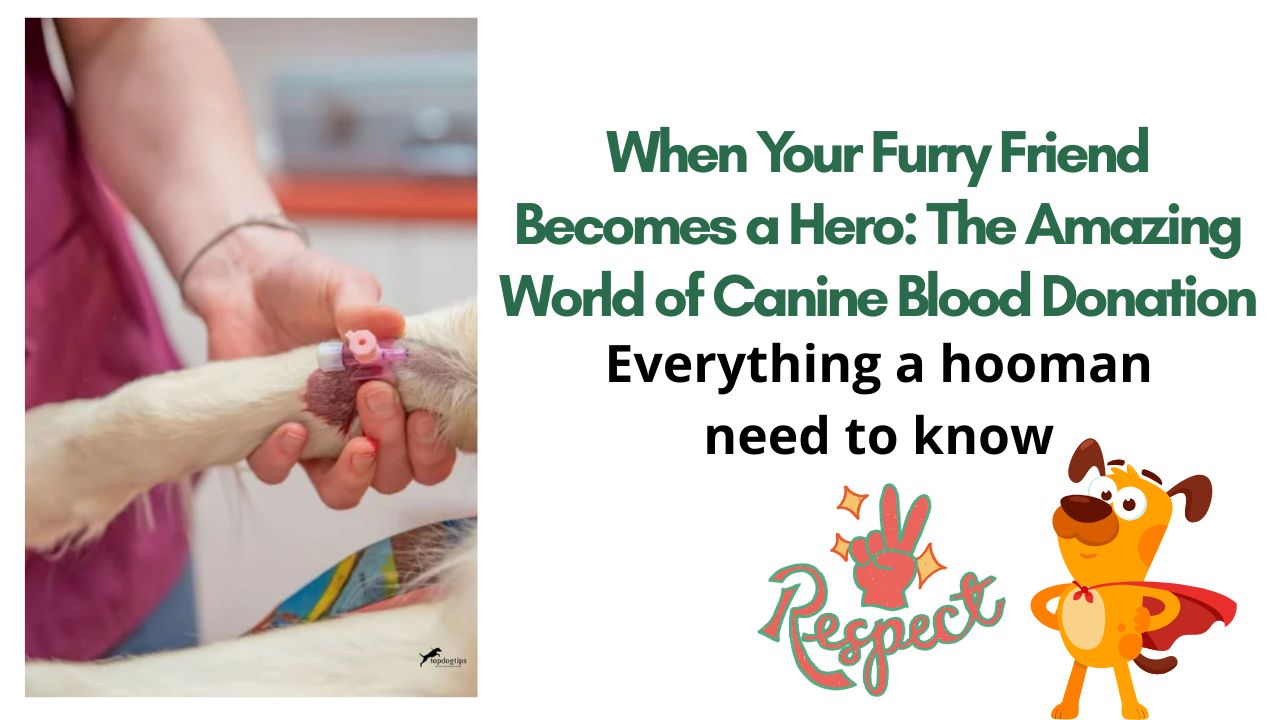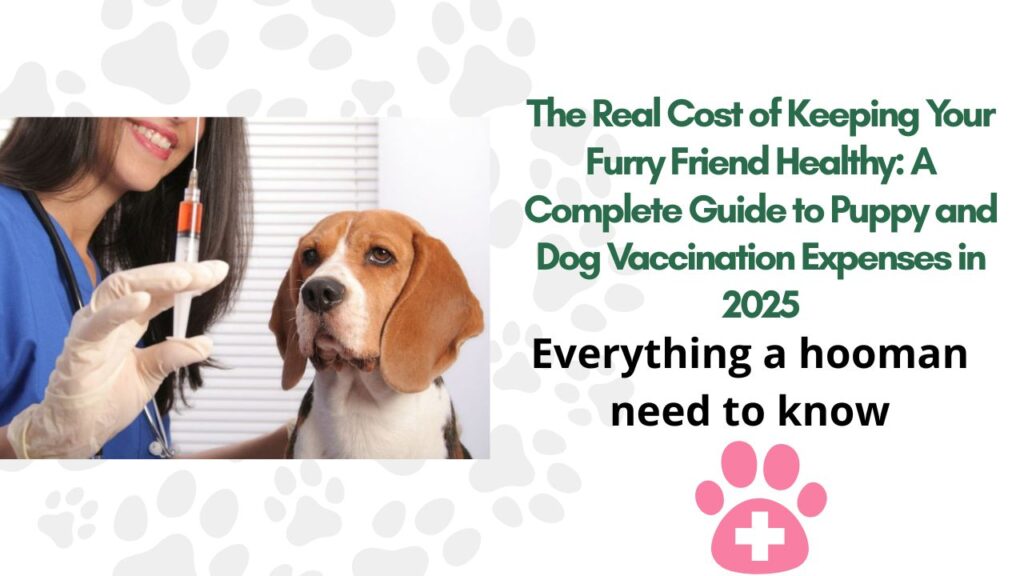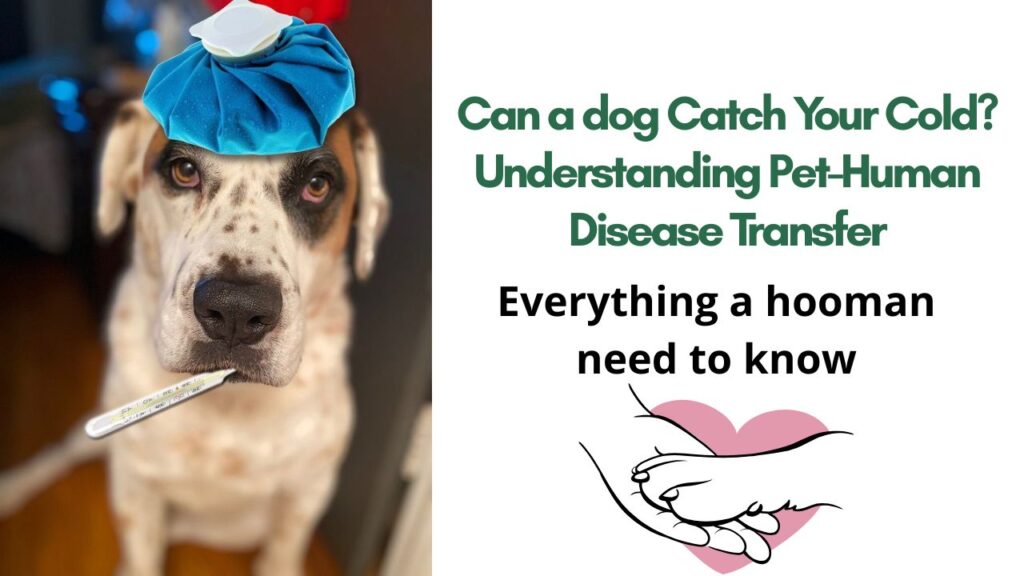Have you ever wondered if your beloved four-legged companion could become a real-life superhero? Well, here’s something that might surprise you – dogs can absolutely be blood donors, and they’re literally saving lives every single day! Just like humans rush to donate blood during emergencies, our canine friends are stepping up to help their fellow pups in need.
A Heartwarming Introduction to Canine Blood Donation

Picture this: somewhere right now, a golden retriever named Max is lying comfortably on a veterinary table, tail wagging gently as he helps save another dog’s life. It sounds almost too good to be true, doesn’t it? But canine blood donation has been quietly revolutionizing veterinary medicine for decades.
The concept isn’t entirely new – in fact, the very first successful blood transfusion recorded in history wasn’t between humans at all. Back in 1665, a physician named Richard Lower successfully performed a blood transfusion between two dogs, some 150 years before the first successful human-to-human exchange was managed. Talk about dogs being ahead of their time!
Today, organizations like Pet Blood Bank have been running canine blood exchanges since 2007, providing veterinary surgeries with the blood needed for poorly pets. What’s truly remarkable is that over 10,000 lifesaving dogs are registered with Pet Blood Bank to date. These aren’t just numbers – they represent thousands of wagging tails and wet noses that have chosen to be heroes.
When we think about blood donation, we often imagine the satisfaction of knowing we’ve helped save a human life. Well, dog blood donation offers that same incredible feeling, but with an added bonus – you get to watch your furry friend become a genuine hero while getting lots of treats and belly rubs in the process!
The Amazing Benefits of Canine Blood Donation
For the Recipients: A Second Chance at Life
Every day, dogs across the country face life-threatening situations where blood transfusions become their lifeline. One unit of donated blood (approximately 450ml) can potentially save up to four different patients with conditions ranging from cancer and poisoning to clotting diseases and traumatic injuries. Imagine knowing that your dog’s single donation could help four other families avoid the heartbreak of losing their beloved pet.
Blood products are also crucial for dogs undergoing major surgeries and intensive treatments. Whether it’s a emergency surgery after an accident, treatment for immune-mediated hemolytic anemia, or support during cancer therapy, donated blood provides the critical support these patients need to recover.
For the Donors: Health Benefits and VIP Treatment
Your blood donor dog isn’t just giving – they’re receiving some pretty amazing perks too! Most blood donation programs provide comprehensive health screenings that would normally cost hundreds of dollars. We’re talking about extensive blood work, physical examinations, and infectious disease testing.
Many programs also offer additional benefits like discounts on veterinary care, free food, or flea-and-tick products. Some facilities even provide yearly stipends to help maintain the wellness criteria that donors must uphold. After six donations, some programs offer special rewards cards that can be used for emergency or specialty services.
But perhaps the most valuable benefit is the peace of mind that comes with regular health monitoring. Donor dogs receive top-notch veterinary care and are often the first to catch any health issues early, when they’re most treatable.
For the Families: The Pride of Having a Hero at Home
There’s something incredibly special about knowing your dog is out there saving lives. Many families describe the immense pride they feel when their pet becomes a blood donor. It’s like having a four-legged superhero living in your house! Plus, the regular health check-ups mean you’ll always know your furry friend is in tip-top shape.
Did You Know—Dogs Have Blood Types?
Here’s where things get really interesting! Just like humans, dogs have different blood types, and understanding this is crucial for safe transfusions. In the UK, veterinarians primarily test for DEA 1, and dogs can either be DEA 1 positive or DEA 1 negative.
The Numbers Game
Most dogs in the UK have DEA 1 positive blood type, which means the positive stock levels are usually healthy. Dogs with this blood type are typically invited to donate once or twice a year. However, only 30% of eligible dogs have DEA 1 negative blood type, and here’s the kicker – this negative blood type can be given to any dog in an emergency, making it incredibly valuable.
Breed-Specific Blood Types
Some breeds are more likely to have the coveted negative blood type. If you own an Airedale Terrier, American Bulldog, Boxer, Doberman, German Shepherd, Greyhound, or Weimaraner, your pup might just be a universal donor! These universal donors are especially appreciated because their blood is compatible with any dog, regardless of that dog’s blood group.
Interestingly, there are actually seven different canine blood types: DEA 1.1, 1.2, 1.3, DEA 4, DEA 3 and 5, and DEA 7. All dogs possess the DEA 4 red cell protein, but dogs with only the DEA 4 protein are considered universal donors. Up to 75% of Doberman Pinschers have this special blood type.
The Science Behind Compatibility
In most cases, dogs can receive blood from any group for their first transfusion, but after that, the blood must be “cross-matched” to that dog’s blood group to avoid dangerous transfusion reactions. This is why having a diverse pool of blood donors with different blood types is so crucial for veterinary medicine.
What Illnesses and Cases Require Blood Donation
Understanding when dogs need blood transfusions helps us appreciate just how vital donor programs really are. The situations are more common than you might think, and they can happen to any dog, at any time.
Emergency Situations
Trauma cases are among the most urgent needs for blood products. When a dog is hit by a car, suffers a severe bite wound, or experiences any major accident resulting in significant blood loss, immediate transfusion can mean the difference between life and death. Emergency surgeries, whether for bloat, bowel obstructions, or other critical conditions, often require blood products to ensure the best outcomes.
Surgical Procedures
Many elective and emergency surgeries require blood transfusions to ensure patient safety. Complex procedures, cancer surgeries, and operations on older dogs often necessitate having blood products readily available. Even routine surgeries can sometimes result in unexpected complications where blood transfusion becomes necessary.
Medical Conditions
Several medical conditions create ongoing needs for blood products:
Immune-mediated hemolytic anemia (IMHA) is a condition where the dog’s immune system destroys its own red blood cells. These patients often require multiple transfusions during treatment.
Cancer treatment frequently requires blood support, as chemotherapy can suppress the bone marrow’s ability to produce blood cell.
Von Willebrand’s disease and other bleeding disorders may require plasma transfusions to provide clotting factors.
Chronic anemia from various causes can be managed with regular blood transfusions while treating the underlying condition.
Poisoning and Toxicity
Rodent bait toxicity is unfortunately common, as many baits affect blood clotting factors in dogs7. These cases often require plasma transfusions to restore normal clotting function. Other toxins can also damage blood cells or interfere with blood production, necessitating transfusion support.
Pregnancy Complications
Female dogs experiencing complicated pregnancies sometimes need transfusions to deliver their puppies safely. Severe bleeding during or after delivery can be life-threatening without immediate blood support.
Canine Blood Donation: What You Need to Know and Step-by-Step Process
Is Your Dog Hero Material?
Not every dog can be a blood donor, but the basic requirements are pretty straightforward. Think of a healthy Labrador or German Shepherd – dogs of this size and temperament typically make excellent donors.
Basic Requirements:
- Age: Between 1-8 years old to start donating
- Weight: Minimum 25kg (about 55 pounds)
- Health: Must be fit, healthy, and current on vaccinations
- Temperament: Calm, friendly personality that enjoys meeting new people
- Travel history: Never traveled outside the UK and Ireland
- Medication: Not on any medications (except standard parasite preventives)
The Screening Process
Before your dog can become a blood donor, they’ll go through comprehensive screening. This isn’t just a quick check-up – we’re talking about thorough health evaluations that ensure your pup is in perfect condition to help others.
Health Screening Includes:
- Complete physical examination
- Extensive blood work and infectious disease screening
- Blood typing to determine DEA status
- Heart health evaluation (no heart murmurs allowed)
- Parasite testing and prevention status check
Temperament Assessment:
Your dog needs to be comfortable being handled by strangers and calm enough to lie still for about 30 minutes. The good news? Many energetic dogs surprise their owners by being able to relax during the donation process, especially with plenty of treats and attention from the veterinary team.
The Donation Day: Step-by-Step
Before the Appointment:
Keep your dog’s routine as normal as possible. Feed them their regular meals until about four hours before the appointment, and make sure they have access to water. Bring their favorite treats and maybe a familiar blanket or toy to help them feel comfortable.
At the Clinic:
- Check-in and Health Assessment: The veterinary team will perform a quick health check to ensure your dog is feeling well that day.
- Preparation: A small area on your dog’s neck will be shaved and cleaned for the blood collection. Local anesthetic cream is applied to keep them comfortable.
- The Collection: Your dog will lie on their side while approximately 450ml of blood is collected from their jugular vein. The process takes less than ten minutes, and most dogs stay perfectly relaxed with plenty of treats and belly rubs from the staff.
- Recovery: After donation, your dog might receive some treats and extra attention. Most dogs are ready to go home immediately, though some may receive IV fluids if needed.
Post-Donation Care:
The amazing thing about dog blood donation is that no special post-donation care is required. Dogs replenish the blood cells lost in about 2-3 weeks, and they can typically resume normal activities right away.
Frequency and Commitment
Positive blood type dogs are usually invited to donate once or twice a year, while negative blood type dogs may be asked to donate up to six times a year due to higher demand. Most programs ask for a commitment of at least two years to make the screening investment worthwhile.
What Happens to the Canine Donated Blood?
Ever wondered what happens to your dog’s blood after they’ve made their heroic donation? The journey from donation to life-saving transfusion is actually quite fascinating and involves some pretty sophisticated science.
The Collection Process
When your dog donates, their blood goes into a special collection bag containing a solution to prevent clotting. These aren’t just any bags – they’re the same high-quality blood collection bags licensed for human use. The blood is collected into one primary bag, but there are three additional bags attached that are used during processing.
Transportation and Initial Processing
Within hours of donation, the blood is transported to a processing center in a protective box that allows it to cool gradually to around 20°C – the optimal temperature for processing. Every unit gets a unique reference number that relates back to your dog, meaning every single unit of blood is completely traceable to its donor.
The Separation Magic
Here’s where science gets really cool! The blood is placed in a machine called a centrifuge, which spins it very quickly for 15 minutes. This process separates the heavier red blood cells from the plasma, essentially creating two different life-saving products from one donation.
The plasma is transferred into one of the additional collection bags, while a special nutrient is added to the red blood cell component to extend its shelf life to six weeks. If needed, both the red cells and plasma can be split in half to create smaller units perfect for smaller dogs. This is how one donation can help up to four other dogs!
Storage Solutions
Red blood cells are stored in refrigerators and have a shelf life of six weeks. Plasma, on the other hand, is frozen and can be stored for up to five years. This long storage time for plasma is particularly valuable because it means blood banks can build up reserves for emergency situations.
From Storage to Lifesaving
When a veterinarian needs blood for a patient, the process is remarkably efficient. The blood products are packed carefully in temperature-controlled boxes and sent by courier to the veterinary practice. Before transfusion, the blood is warmed to body temperature to ensure the recipient’s comfort.
Quality Control and Safety
Throughout this entire process, strict quality control measures ensure the safety and effectiveness of every unit. The blood undergoes multiple inspections, and detailed records are kept at every stage. This attention to detail means that when a dog receives a transfusion, both the veterinarian and the pet’s family can have complete confidence in the product’s safety and quality.
Questions Most Asked About Dogs Donating Blood
1. Does blood donation hurt my dog?
This is probably the most common concern, and it’s completely understandable! The good news is that canine blood donation is designed to be as comfortable as possible for your furry friend. Local anesthetic cream is applied to numb the skin before the needle insertion, and the actual collection process takes less than ten minutes. Most dogs are so relaxed during the procedure that they often fall asleep or simply enjoy the extra attention and treats from the veterinary staff. Many owners are amazed at how calm their typically energetic dogs become during donation.
2. How often can my dog donate blood?
The frequency depends on your dog’s blood type. Dogs with DEA 1 positive blood (the majority) are typically invited to donate once or twice a year. However, dogs with the more rare DEA 1 negative blood type may be asked to donate up to six times a year because this blood can be given to any dog in an emergency. The welfare of donor dogs is always the top priority, so they’re only asked to donate when there’s a genuine need.
3. What are the age and size requirements for donor dogs?
Donor dogs must be between 1-8 years old and weigh at least 25kg (about 55 pounds). The age range ensures that dogs are mature enough to handle the procedure but young enough to be in peak health. The weight requirement ensures that the standard donation amount (450ml) won’t negatively impact the dog’s health. Some programs may have slightly different requirements, but these are the general standards.
4. Can my dog donate if they’ve had surgery or been sick?
Dogs must be in excellent health to be blood donors. If your dog has had recent surgery, been ill, or is on medications (other than standard parasite preventives), they typically won’t be eligible to donate. Dogs that have previously received blood transfusions are also usually excluded from donor programs. The screening process is thorough specifically to ensure that only the healthiest dogs participate.
5. What breeds make the best blood donors?
While any healthy dog meeting the size and temperament requirements can potentially be a donor, certain breeds are particularly valuable. Universal donor breeds with DEA 1 negative blood type include Airedale Terriers, Boxers, Dobermans, German Shepherds, Greyhounds, and Weimaraners. Greyhounds are especially popular as donors because they naturally have higher hematocrit levels than most other breeds.
6. Will my dog need special care after donating?
One of the wonderful things about canine blood donation is that no special post-donation care is required. Dogs replenish their blood cells in about 2-3 weeks and can resume normal activities immediately. Some dogs might be a bit sleepy after donation, especially if they received mild sedation, but this is completely normal and temporary.
7. What happens if my dog doesn’t like the donation process?
Dog welfare is always the top priority in any reputable blood donation program. If a dog shows signs of stress, fear, or discomfort during the screening or donation process, they won’t be forced to continue. Programs specifically look for dogs that are confident, enjoy meeting new people, and are comfortable at veterinary clinics. If your dog is anxious or fearful at the vet, they would encourage you to support the program in other ways rather than having your dog participate as a donor.
Conclusion
As we wrap up this journey into the amazing world of canine blood donation, I can’t help but feel incredibly moved by the stories we’ve shared. From that first successful dog-to-dog transfusion back in 1665 to the thousands of hero dogs registered with blood banks today, our four-legged friends have been quietly saving lives for centuries.
What strikes me most about this topic is how it perfectly captures the essence of what makes dogs so special. They don’t understand the concept of heroism or life-saving – they just know they’re getting treats, belly rubs, and lots of attention from nice people. Yet in their simple, trusting way, they’re making the ultimate difference in other dogs’ lives.
I think about families like Denise Ratzlaff’s, who’ve experienced the terror of emergency surgeries with their beloved Irish Wolfhounds, and how grateful they are for the donors who came before them. It’s this beautiful cycle of giving and receiving that makes the canine blood donation community so special. Today’s recipient might become tomorrow’s donor, and today’s donor might need help someday too.
The statistics are impressive – over 10,000 registered donors, thousands of units distributed annually, up to four lives saved per donation – but behind every number is a wagging tail and a family’s relief. Whether it’s a golden retriever helping a trauma victim, a German Shepherd supporting a cancer patient, or a Greyhound providing universal donor blood for an emergency, these dogs are writing their own heroic stories one donation at a time.
If you’re sitting there wondering whether your dog could be one of these heroes, I encourage you to reach out to your local blood bank or veterinary hospital. Even if your pup doesn’t meet the donor criteria, there are always other ways to support these vital programs. And if they do qualify? Well, you might just discover that you’ve been living with a superhero all along.
The next time you see your dog sleeping peacefully in their favorite sunny spot or playing fetch in the backyard, remember that dogs just like yours are out there making miracles happen. They’re proving, once again, that sometimes the biggest heroes come in the most humble packages – complete with wet noses, wagging tails, and hearts full of unconditional love.
In a world that often feels complicated and divided, there’s something beautifully simple about dogs helping dogs. No politics, no judgment, no conditions – just pure, instinctive kindness. Maybe that’s the most important lesson our canine blood donors teach us: that heroism doesn’t require understanding the bigger picture. Sometimes, it just requires showing up, being brave, and trusting that your small act of kindness will ripple out into something magnificent.
So here’s to all the donor dogs out there – past, present, and future. Thank you for reminding us that heroes come in all shapes and sizes, and that sometimes the most powerful way to change the world is simply by being willing to help when help is needed. You truly are the goodest boys and girls, and the world is a better place because of your gentle, generous hearts.






